Enermax Revolution SFX 650W PSU Review
Why you can trust Tom's Hardware
Packaging, Contents, Exterior & Cabling
Packaging
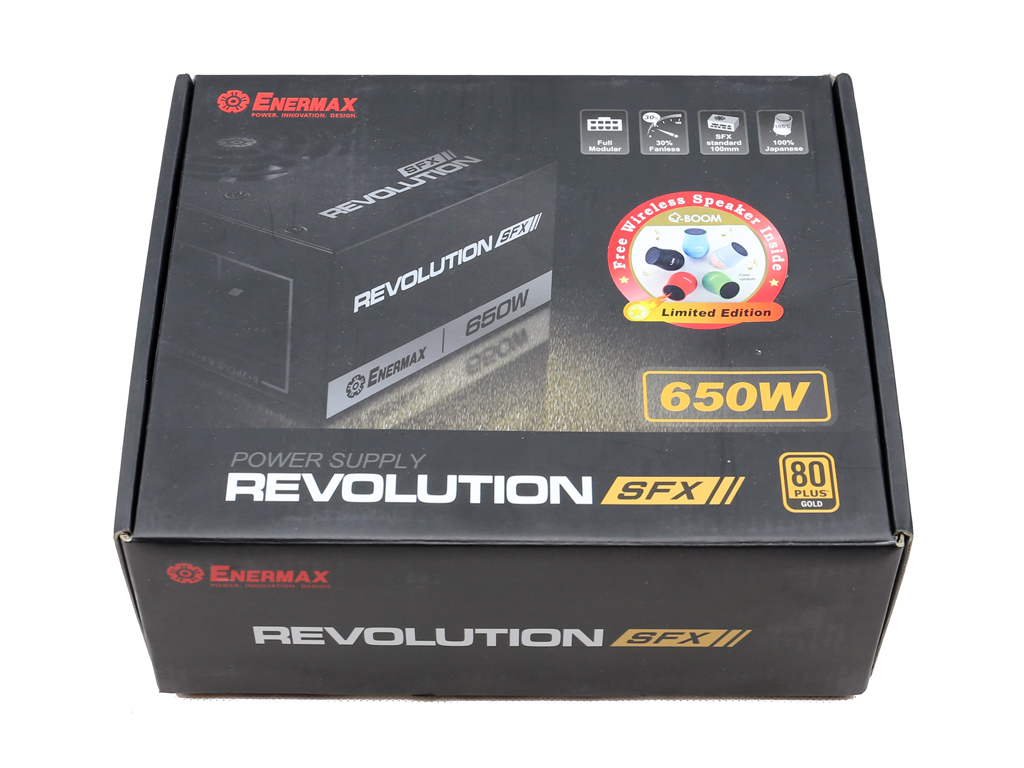


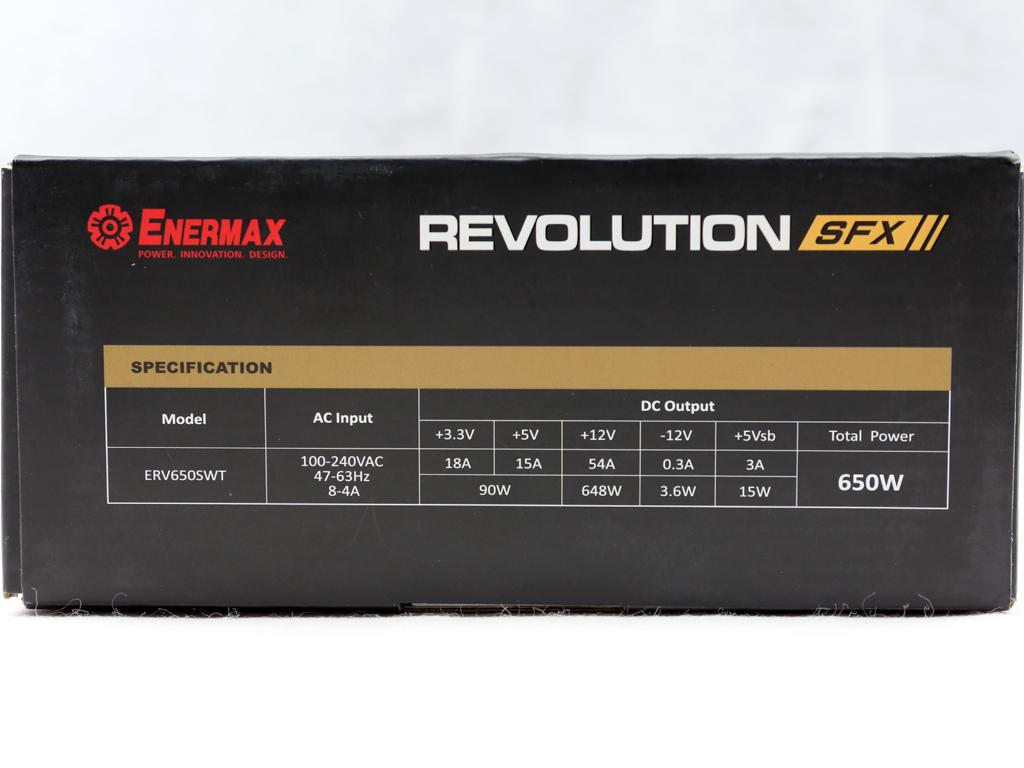




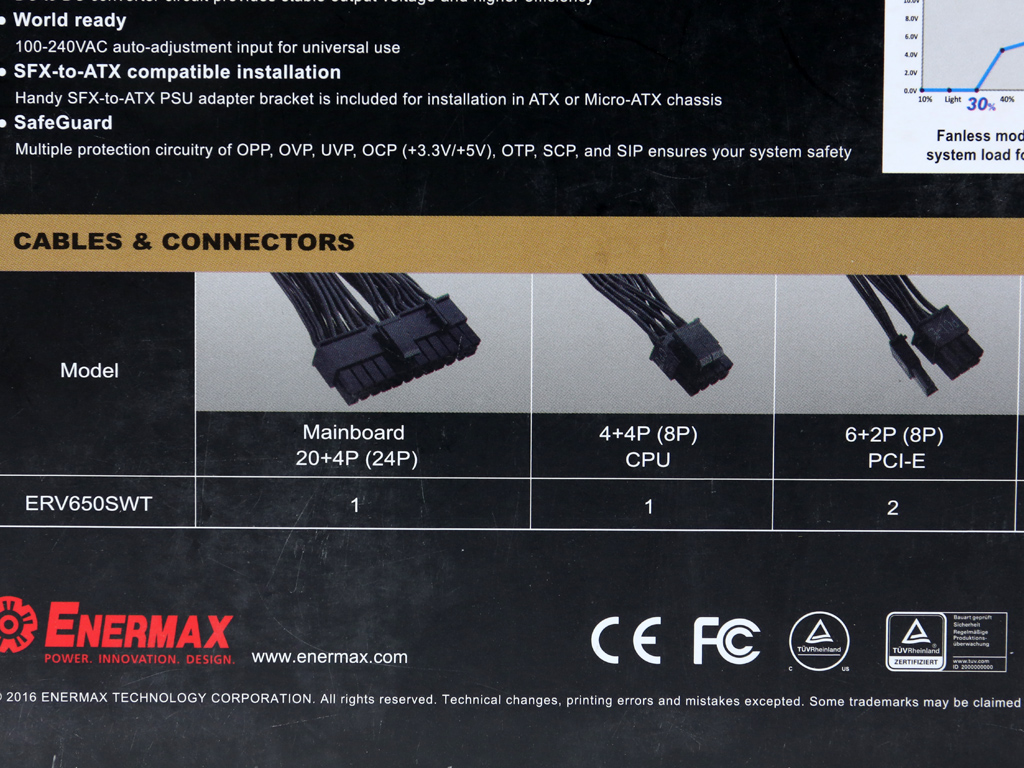

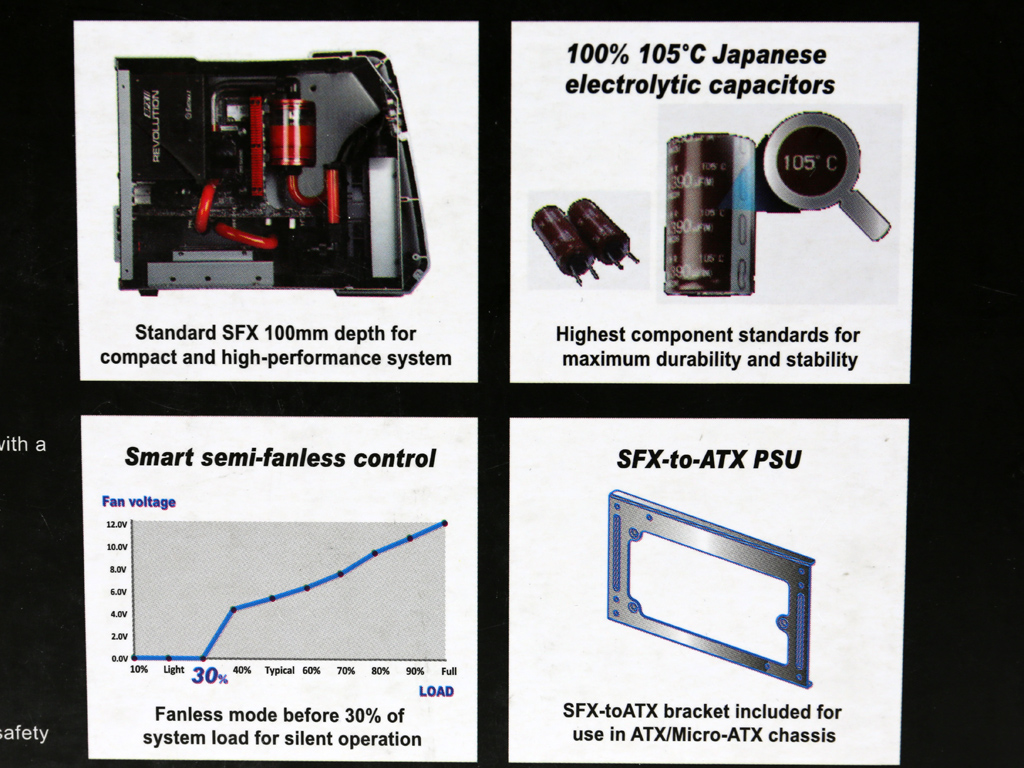
The packaging is compact to match the PSU inside. Up front, we find a series description, this model's wattage, and an 80 PLUS Gold badge. Four badges draw attention to the modular cable design, the semi-passive mode, the 100% Japanese electrolytic caps, and the SFX form factor. There is also a sticker mentioning the wireless speaker that Enermax includes.
The cable specification table is shown on one of the box's sides. On the other side, Enermax states that there is no warranty, return, or exchange for the bundled wireless speaker. If you have to return the ERV650SWT, make sure to include the speaker as well or you'll pay a fee equal to its price.
Around back is a long feature list and a small graph depicting the fan's semi-passive operation. According to Enermax, the fan doesn't spin until the PSU outputs more than 30% of its max-rated capacity. What this graph doesn't show, though, is the temperature limit. Aside from load level considerations, the operating temperature needs to be below 25°C for the passive mode to work. Another photo shows the provided SFX-to-ATX bracket, and a graphical list shows the available connectors.
Contents


The box contents are arranged nicely inside. However, they aren't fully protected since Enermax doesn't use any packing foam sheets. The PSU is mostly protected by a bubble-wrap.
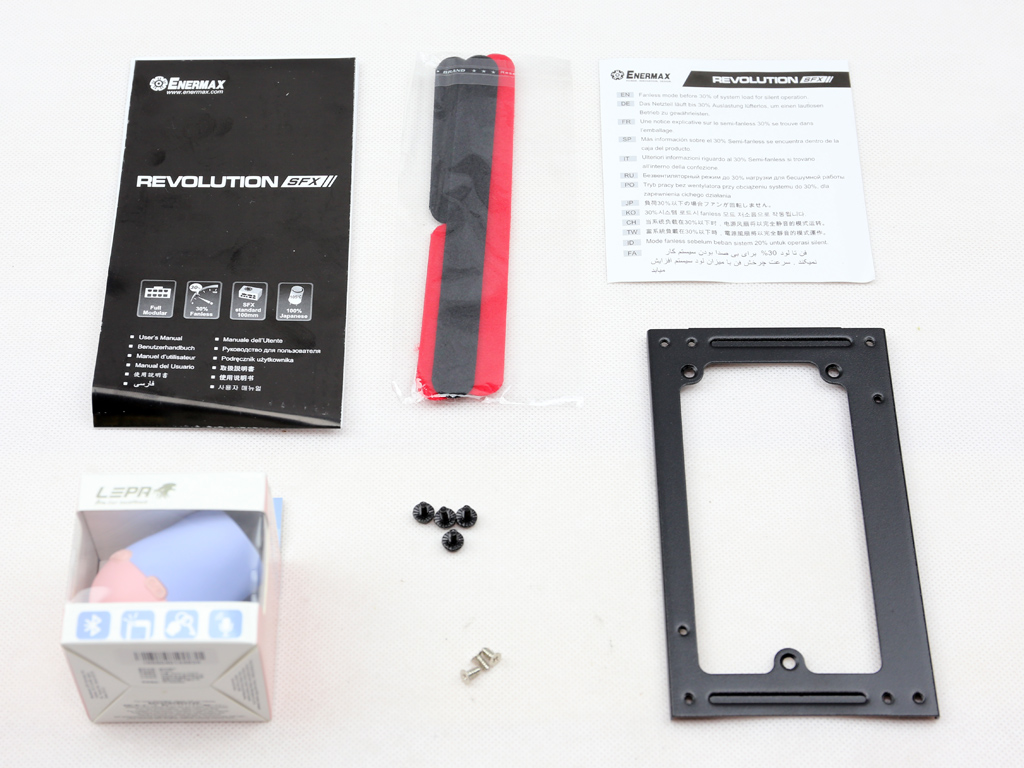

The bundle includes three screws for installing the SFX-to-ATX bracket and a set of fixing bolts for mounting the PSU onto the chassis, along with some Velcro straps, the user's manual, a piece of paper describing the semi-passive mode, and the aforementioned wireless speaker.
Exterior
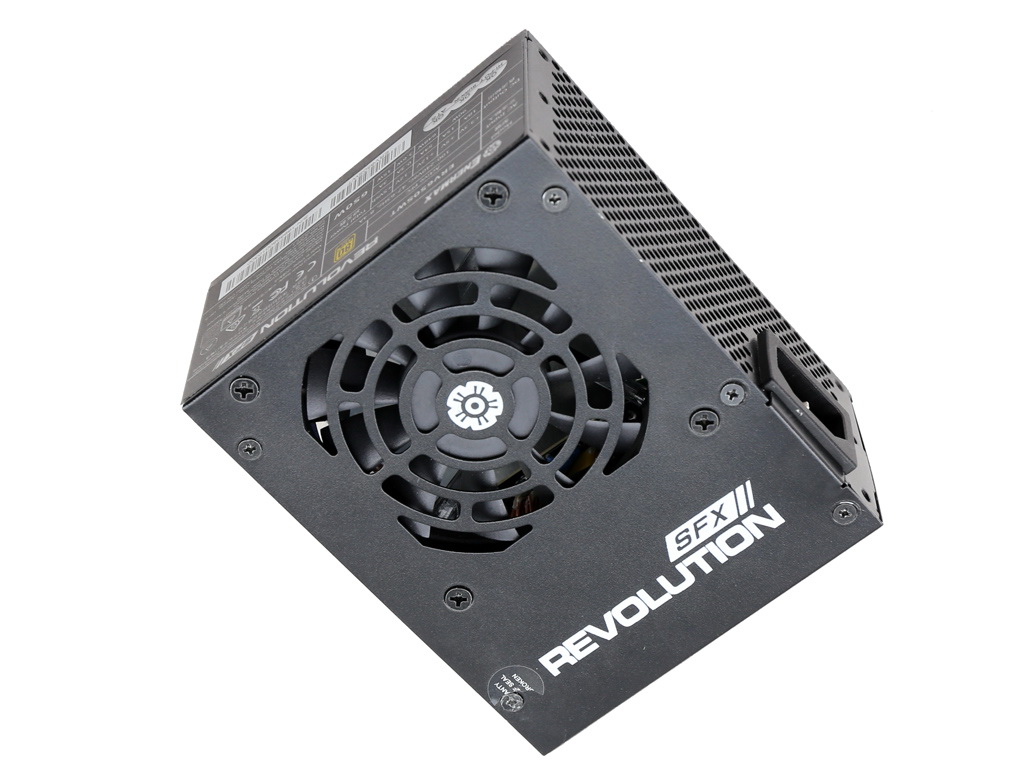

Naturally, an SFX PSU's dimensions are bound to be compact. But that doesn't mean the ERV650SWT is limited in its ability to feed lots of power to a high-end PC. Really, the only issue we have are those two PCIe connectors that keep this PSU from natively supporting two high-end graphics cards.
Enermax's fan occupies a fraction of the top cover, proving there's room for something larger, preferably in the 92mm diameter range. Up front, there is no power switch. We consider this to be a great shame.
Get Tom's Hardware's best news and in-depth reviews, straight to your inbox.



There's a power specifications table on one of the PSU's sides. The other side includes a logo and wattage label.


Here's the modular connector panel. It features eight sockets, three of which correspond to the PCIe and EPS cables, two are dedicated to the 24-pin ATX cable, and three host peripheral cables.
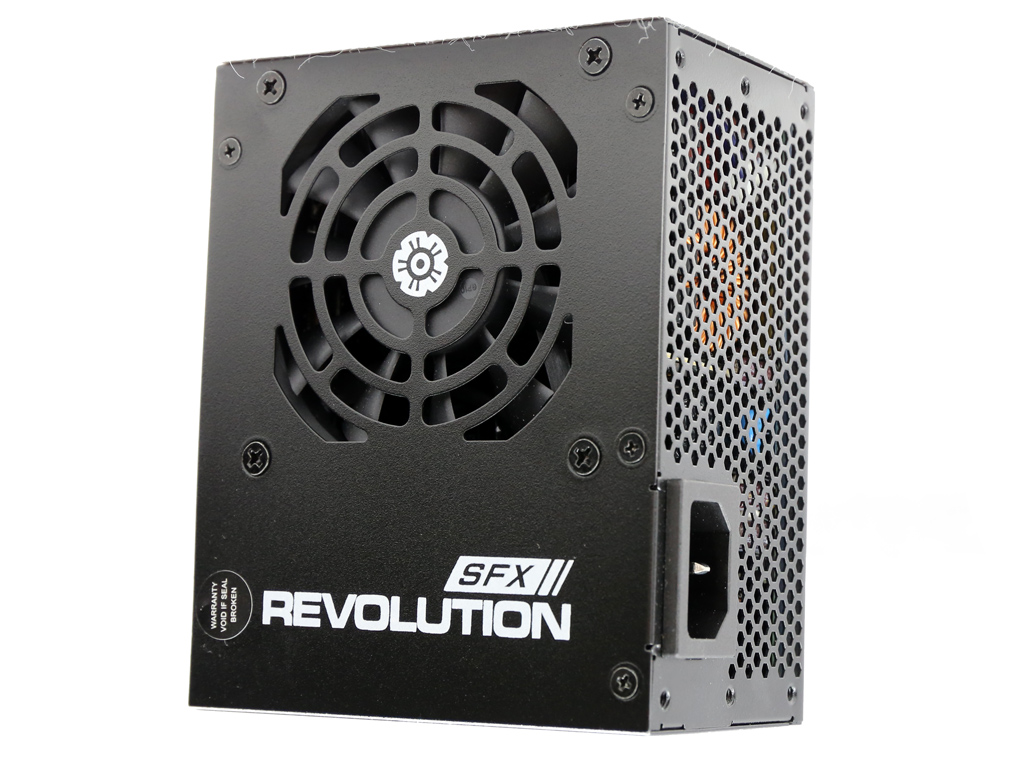

The off-center fan looks weird. However, this installation method was necessary due to the separated transient filter board.
Cabling

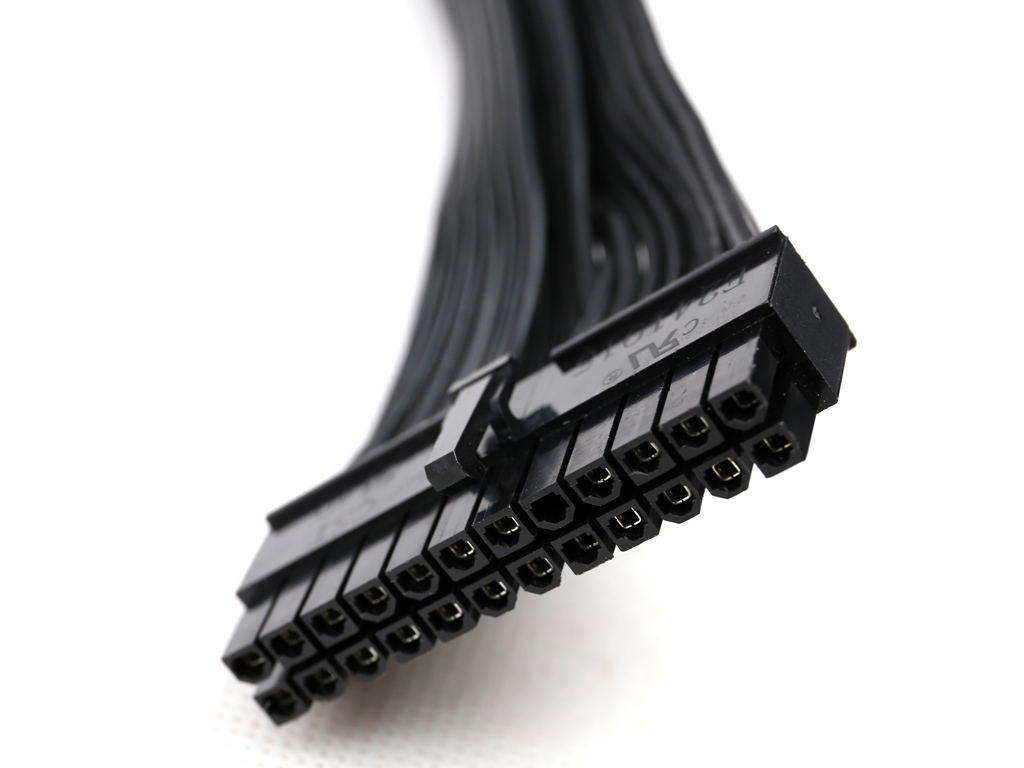
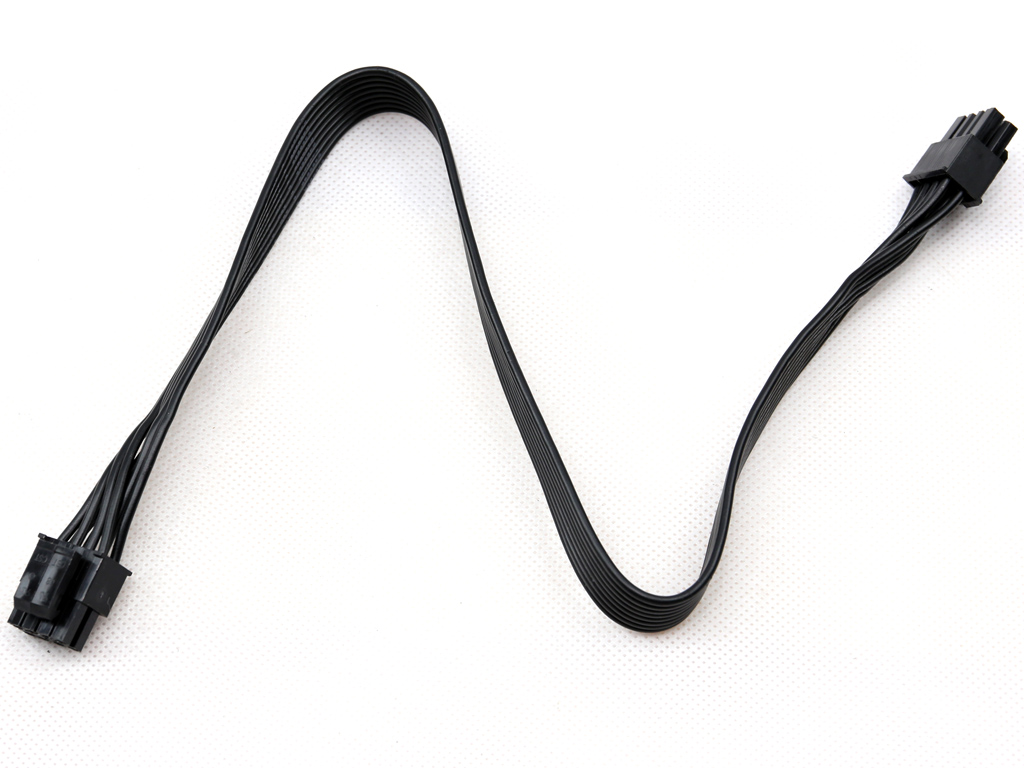

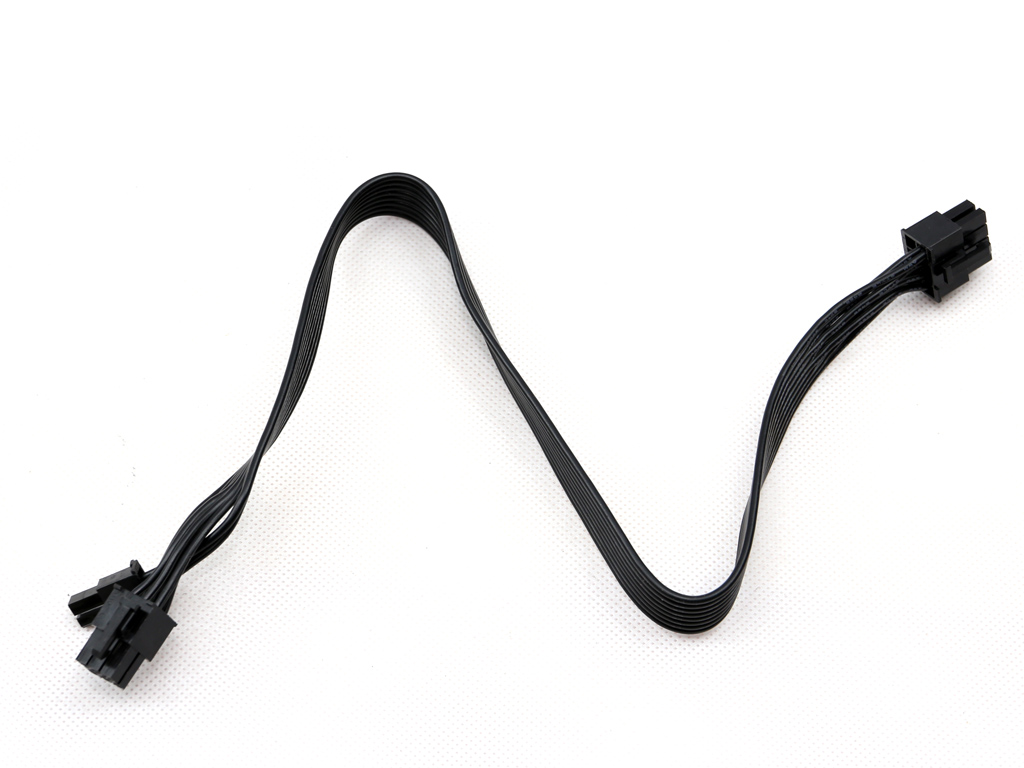




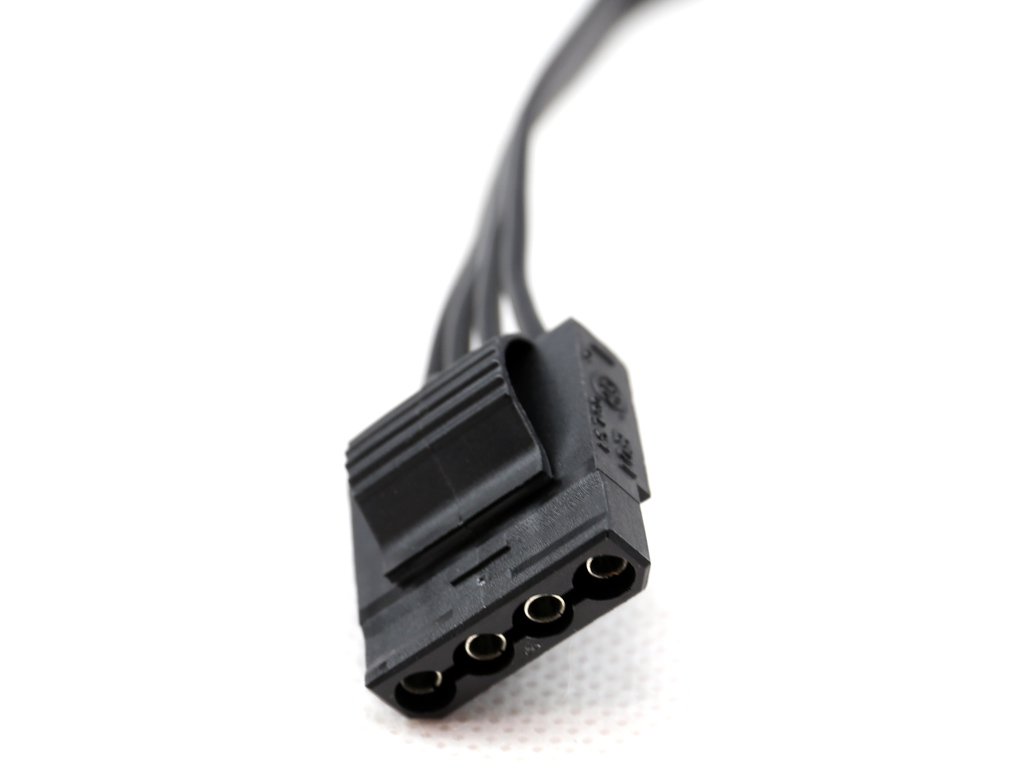
The modular cables use darkened wires and are flat, in order to block less airflow inside the chassis.
MORE: Best Power Supplies
MORE: How We Test Power Supplies
MORE: All Power Supply Content
Current page: Packaging, Contents, Exterior & Cabling
Prev Page Features & Specifications Next Page Teardown & Component Analysis
Aris Mpitziopoulos is a contributing editor at Tom's Hardware, covering PSUs.